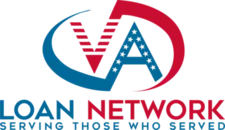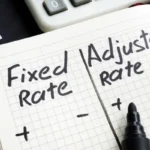Last updated on September 28th, 2024 at 02:30 pm
Locking in a low mortgage rate with a VA loan can be a game changer, especially as we navigate through 2024’s fluctuating housing market.
With mortgage rates experiencing some volatility due to economic uncertainty, VA loans provide a unique opportunity for veterans, active-duty military, and eligible spouses to secure favorable financing terms.
In this article, we’ll cover:
- How the current housing market impacts mortgage rates
- Specific steps to lock in a low rate with a VA loan
- Tips to make the most of your VA loan benefits
- Frequently asked questions (FAQs) about locking in a low mortgage rate
By the end, you’ll have a comprehensive guide to securing the best VA loan rate possible in 2024.
In this Article
Current Housing Market in 2024: How It Affects VA Loan Rates
The U.S. housing market in 2024 has been characterized by high demand but low inventory. This combination, coupled with rising construction costs, has led to steady home price increases in many areas. The average 30-year fixed mortgage rate has hovered around 6.5% to 7%, but VA loans typically offer rates that are 0.5% to 1% lower than conventional loans.
Key Market Trends:
- Home price appreciation: Home values have risen by 5-7% year-over-year in many U.S. regions.
- Inventory shortages: Many markets are experiencing a shortage of available homes, which can drive prices even higher.
- Economic factors: Inflation, Federal Reserve policies, and employment rates are all influencing mortgage rates.
For veterans and active-duty military, these trends can make locking in a low mortgage rate even more critical.
VA loans offer flexibility, and they generally come with lower rates than conventional loans, making them an attractive option in a rising-rate environment.
What is a VA Loan?
A VA loan is a mortgage backed by the U.S. Department of Veterans Affairs (VA) and is designed specifically for veterans, active-duty service members, and certain military spouses. These loans come with several benefits, such as no down payment and no private mortgage insurance (PMI), making them a popular choice for military families.
Key Benefits of VA Loans:
- No down payment required: Unlike conventional loans, which typically require a down payment of 20% to avoid PMI, VA loans allow qualified buyers to put zero down.
- No PMI: Private mortgage insurance can add hundreds of dollars to your monthly mortgage payment, but VA loans don’t require it.
- Lower interest rates: VA loans usually come with lower interest rates than conventional loans.
How VA Loan Rates Compare to Conventional Loan Rates
| Loan Type | Average Interest Rate (2024) | Down Payment Requirement | PMI Requirement |
|---|---|---|---|
| VA Loan | 5.5% – 6.5% | 0% | No |
| Conventional Loan | 6.5% – 7% | 20% | Yes |
Steps to Lock in a Low VA Loan Rate
Locking in a low rate on your VA loan isn’t automatic—it requires careful planning and understanding of both the loan process and market trends. Here are the steps to ensure you’re getting the best possible rate in 2024:
1. Shop Around for Lenders
Not all lenders offer the same VA loan rates, so it’s crucial to compare offers. Request loan estimates from multiple VA-approved lenders and review them carefully. Even a small difference in the interest rate can save you thousands over the life of your loan.
2. Check Your Credit Score
While VA loans don’t have a minimum credit score requirement set by the VA, individual lenders typically look for a score of 620 or higher. The higher your score, the better the rate you’re likely to secure. If your score is below this threshold, consider taking time to improve it before locking in your rate.
3. Time Your Rate Lock
A rate lock freezes your interest rate for a set period, protecting you from fluctuations in the market. The duration of rate locks typically ranges from 30 to 60 days, but longer locks are available if needed. Locking in your rate when interest rates are favorable is crucial, especially in a volatile market.
4. Consider Discount Points
Discount points allow you to “buy down” your interest rate. One point typically costs 1% of the loan amount and can lower your rate by about 0.25%. While this increases upfront costs, it can save you thousands in interest over the life of the loan.
5. Stay Informed on Market Trends
Mortgage rates fluctuate based on economic factors like inflation and Federal Reserve policies. By staying informed on market conditions, you can time your rate lock more effectively.
Tips for Securing the Best VA Loan Rate
- Maintain a Good Debt-to-Income (DTI) Ratio: Lenders prefer a DTI ratio below 41%. Keeping your debt low can help you qualify for better rates.
- Keep Your Employment Stable: Lenders like to see consistent income. Avoid making any significant career changes before locking in your rate.
- Avoid Large Purchases: Large purchases can increase your debt load and negatively affect your credit score, both of which can raise your mortgage rate.
How the VA Funding Fee Affects Your Loan
The VA funding fee is a one-time fee charged to help offset the cost of the VA loan program. It varies depending on whether you’re using the VA loan benefit for the first time or a subsequent time and the size of your down payment.
| Down Payment | First Use Funding Fee | Subsequent Use Funding Fee |
|---|---|---|
| 0% | 2.3% | 3.6% |
| 5% | 1.65% | 1.65% |
| 10% or more | 1.4% | 1.4% |
The funding fee can be rolled into your loan amount, so you don’t have to pay it upfront.
VA Loan Rate Trends for 2024
In 2024, the average mortgage rate for VA loans is expected to range between 5.5% and 6.5%, depending on economic conditions. While the Federal Reserve’s policies on interest rates will continue to affect these figures, veterans can still secure lower-than-average rates by following the steps outlined above.
Relevant Resources
- Veterans United Home Loans: A leading lender specializing in VA loans.
- U.S. Department of Veterans Affairs: Official government site for VA home loan benefits.
Frequently Asked Questions (FAQs)
1. How long can I lock in my VA loan rate?
You can typically lock in your VA loan rate for 30, 45, 60, or even 90 days, depending on your lender. A longer rate lock period may come with higher costs, but it provides protection against rising rates.
2. Can I lock in a VA loan rate without a signed purchase agreement?
Yes, some lenders offer rate locks before a signed purchase agreement, but it’s less common. It’s advisable to confirm with your lender as policies can vary.
3. What happens if rates drop after I lock in my rate?
Some lenders offer a “float-down” option, which allows you to lower your rate if market rates decrease after you lock in. Be sure to ask about this feature when locking your rate.
4. What is the best time to lock in a VA loan rate?
The best time to lock in your rate is when rates are low. Monitor market trends, and consult your lender to time your rate lock effectively.
5. How much can I save by improving my credit score before applying?
Improving your credit score can significantly lower your interest rate, saving you thousands over the life of your loan. For example, raising your score from 620 to 700 could lower your rate by 0.5% to 1%.
6. Can I negotiate VA loan rates with my lender?
Yes, you can negotiate with your lender, especially if you have offers from multiple lenders. It’s always worth asking for a better rate or lower fees.
7. Do VA loan rates vary by lender?
Yes, rates can vary by lender, so it’s crucial to shop around. Different lenders may offer different rate lock periods, discount points, and fees.
The Bottom Line
Locking in a low mortgage rate with a VA loan in 2024 requires careful timing, shopping around, and understanding of your financial profile. The steps outlined above can help you secure the best rate possible in an ever-changing housing market. VA loans provide unique advantages like no down payment, no PMI, and competitive rates, making them an ideal choice for veterans and active-duty service members looking to buy a home.

















